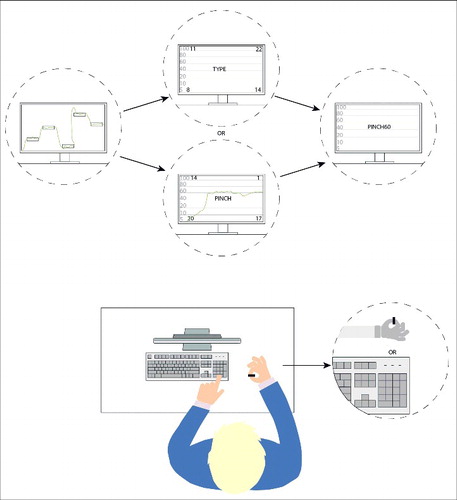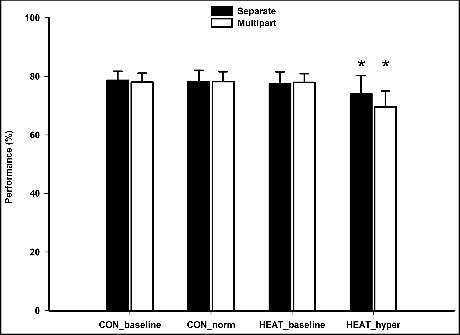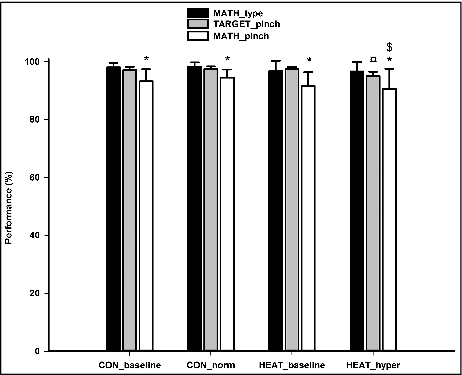Figures & data
Figure 1. Illustration of the motor-math protocol of the present study. e.g. to the left an illustration of the visuo-motor tracking task (VMT), where the 5 boxes/targets appears on the screen 1 s before the 12 s tracking begins. The cursor (green line) moves from left to right over the screen (fixed velocity) and the subject is instructed to adjust force on the strain gauge transducer to keep the cursor within the designated box. In the “separate protocol”, this task then repeats 40 times with the position of the boxes randomly changed from trial to trial, whereas in the multipart protocol, the VMT alternates with the MATH_type, MATH_pinch or TARGET_pinch tasks. During VMT, MATH_pinch and TARGET_pinch, subjects used the strain gauge, whereas in the MATH_type the number pad was used (bottom pic, right).

Table 1. Rectal temperature (Tcore) in Celsius ± SD. Body weight (BW) in kilograms ± SD. Heart rate (HR) in beats per minute ± SD. Thermal comfort rating (TC) ± SD and Temperature sensation rating (TS) ± SD.
Figure 2. VTM during thermoneutral (CON_baseline and CON_norm) and heat (HEAT_baseline and HEAT_hyper) for both separate and multipart protocol. Values are means plus SD for each condition. * Significant different from baseline and CON_norm conditions.

Figure 3. MATH_type, TARGET_pinch and MATH_pinch during thermoneutral (CON_baseline and CON_norm) and heat (HEAT_baseline and HEAT_hyper). Values are means plus SD for each condition. * Significant lower task score within condition, $ significant different form CON_norm, ¤ significant different from all baseline and CON_norm.

